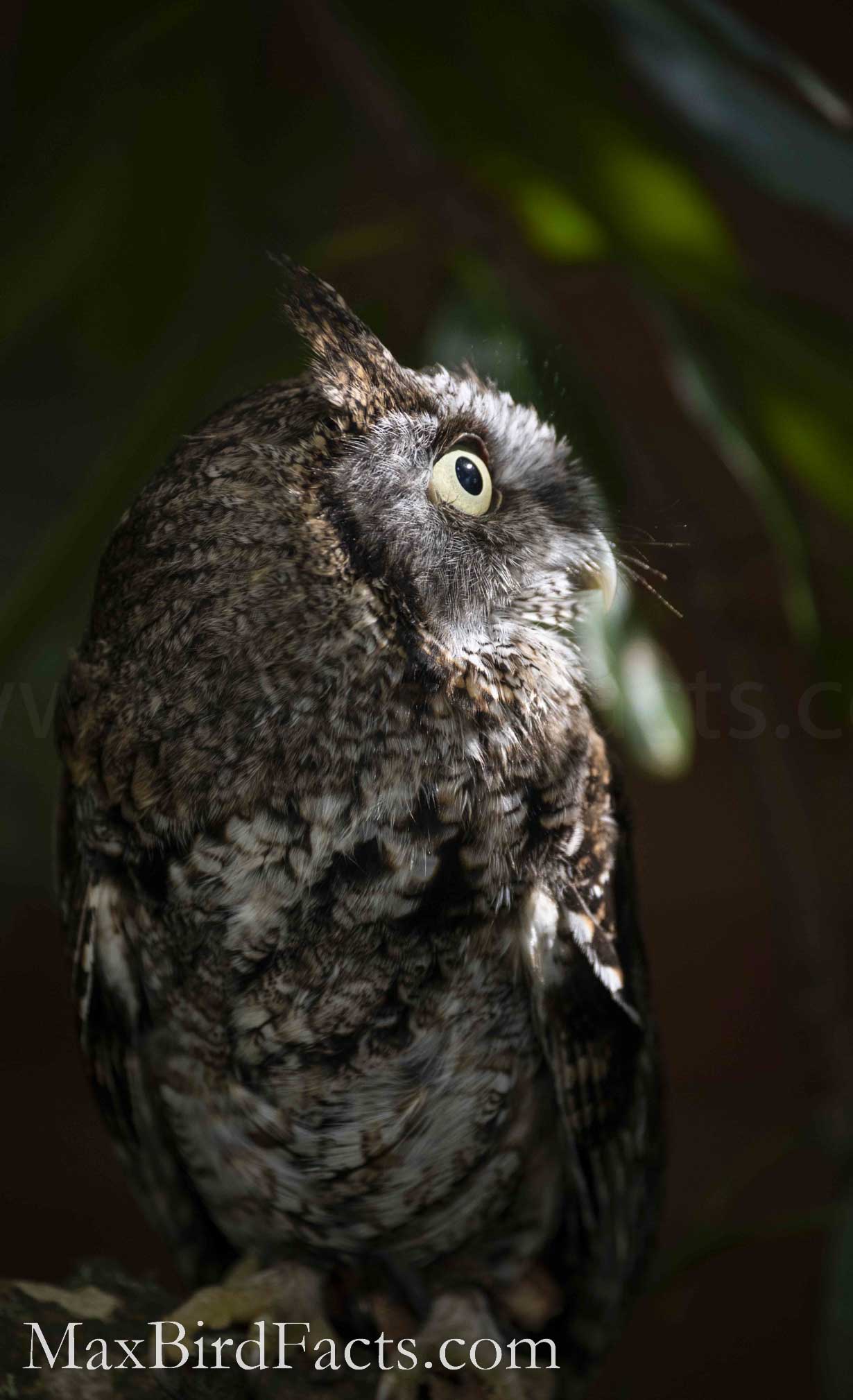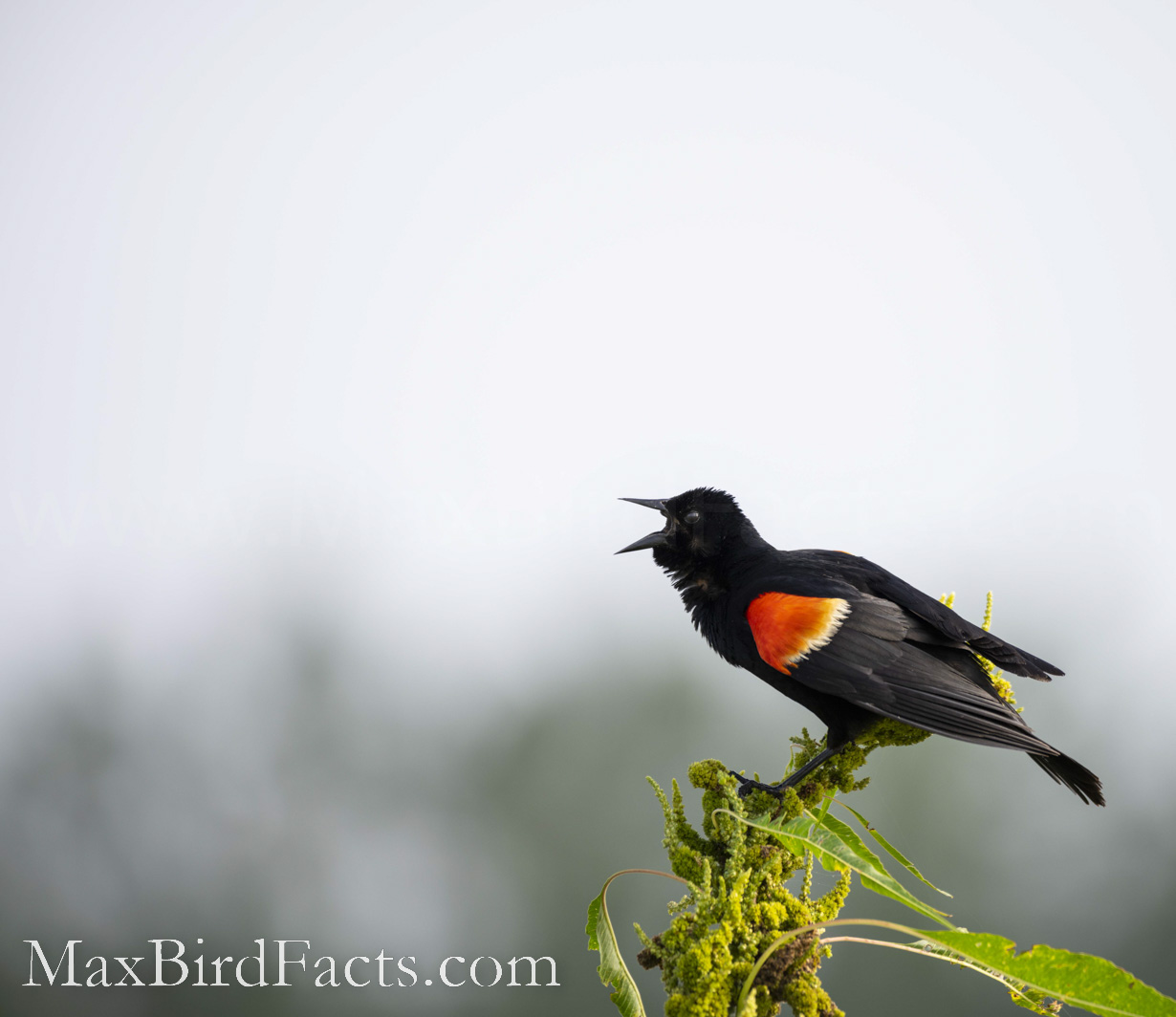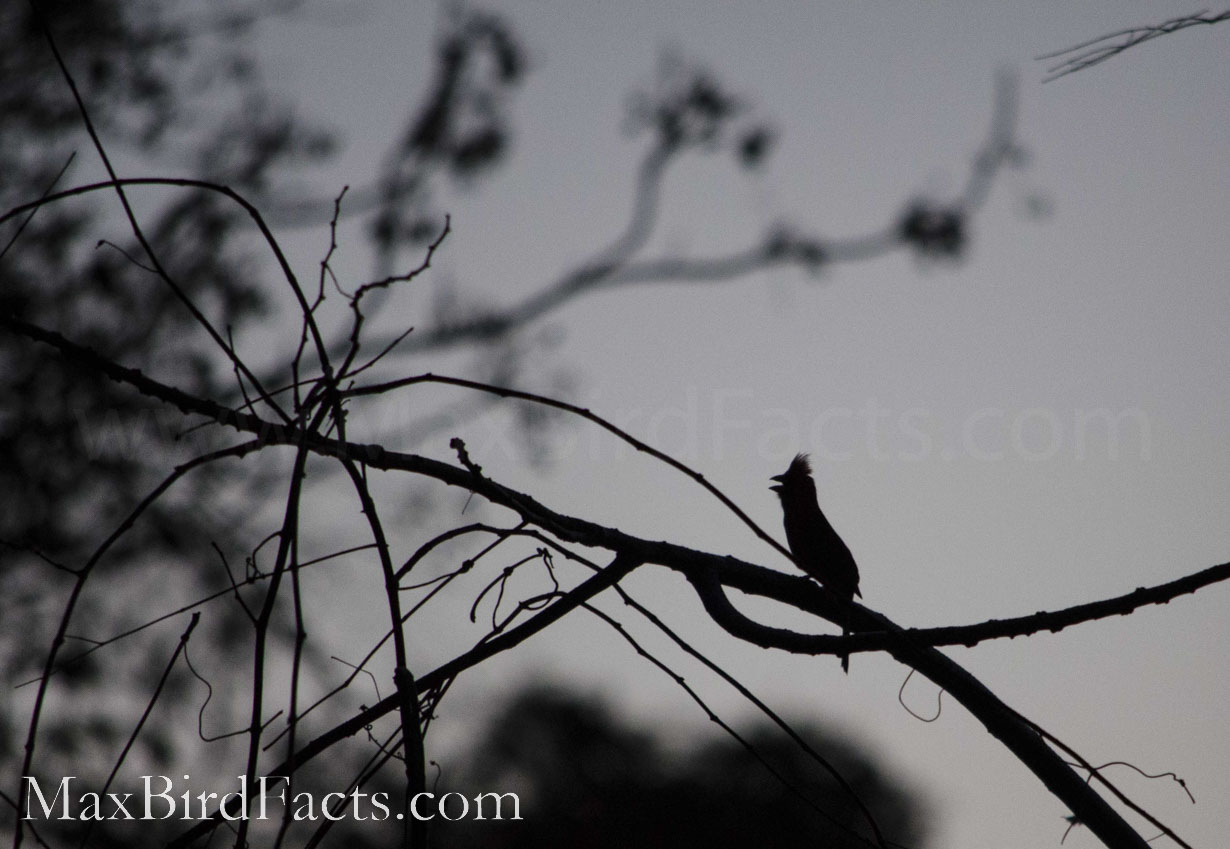Have you ever wondered why songbirds, on occasion, act so aggressively? It happens for several reasons: protecting nests, defending territory, and their small size.
If you put yourself in the shoes of the bird, you probably could understand why. Always at risk of being attacked by a myriad of predators, which causes them to be stressed.

Along with those same threats trying to attack your young, your neighbors are also trying to steal your food and territory. The constant stress these little birds deal with makes them snappy and on edge, just like it does to us.
Now let’s dive into the details of some of this behavior, more specifically on nest protection and territoriality.
Nest Protection
The most widely accepted reason these little birds can be so aggressive is to protect their offspring. Any organism that raises its own young is hyper-protective, but I would say this is more noticeable in songbirds.
When danger comes near the nest, the parents will start to make frantic calls in an attempt to scare it off. If that fails, they will resort to divebombing the predator.
It isn’t rare for a raptor, like a Red-shouldered Hawk, to be chased off by a bird only a fraction of its size!
This behavior is called mobbing. Usually, a smaller bird attacks a predator to defend its nest, hatchlings, or mate.
A single bird typically carries out mobbing, but multiple birds can attack the predator. When groups of birds mob, it’s usually from a species that nests in colonies, such as swallows, gulls, and some wading birds.
Gulls are one of the best-recorded group mobbing birds. They will even vomit on the attacker as they divebomb them, demoralizing the predator.

Different species will react to different predators. Depending on where the predator is, it will cause the defending bird to behave accordingly.
Some species are much bolder with their attacks, perching near the threat and continuously mocking it. Larger species will tend to do this, where the predator poses less of an immediate threat to them.
Smaller birds will tend to stay concealed in the brush while the predator is perched, making them a more difficult target while also warning their neighbors of the threat.
For example, when an Eastern Screech Owl is discovered, birds in the area will remain hidden as they shriek. This owl loves to prey on small birds, like the Carolina Wren, Northern Cardinal, and many warbler and finch species.
This is the reason the birds are so hesitant to face the owl in the open. This behavior is seen with many other raptors that hunt small birds.
Staying in the bushes allows the parents to cause a commotion around the predator, causing it to be unsuccessful in their hunt and forcing it to move on.

Mobbing can even take to the wing to ensure the attacking bird is chased far away from the nest.
When pursuing a predatory bird, the defender will trail behind, slightly above or below, and occasionally swoop in to drive the more giant bird away.
The defending bird dives at a sharp angle to keep them safe from a counter-attack. They will even peck or snatch at the larger bird to encourage its retreat.

Crows are some of the most defensive songbirds. Yes, they are members of the Passeriformes order!
They are fiercely defensive of their nests, and if you go walking through the woods and start to hear them caw extremely loudly, you may be near a nest.
They will even recruit their neighbors to help to chase off more dangerous predators. Still, just a single crow can easily handle a large bird of prey.
Sometimes the size difference between the birds is so enormous it would be equivalent to a Chiuahuah scarring off and chasing down an African Lion.
This size difference forces the tiny bird to be overly aggressive. Since they don’t pose any real threat to the immense predator, they have to make it up with appearances.
Making louder vocalizations, divebombing, pecking and scratching, and relentlessly chasing down the predator are all ways to compensate.
Think of the Napoleon Complex. A smaller person feels the need to be more aggressive because of their smaller overall size.

This abundance of violence helps these birds scare off animals that should, in no way, be afraid of them. Their willingness to face this deadly threat head-on will dissuade even the most formidable hunter.
We must commend these little birds for their ferocity in attacking some of the raptors they face. Nearly every bird species is a generalist, meaning they are just as happy eating flesh as they are fruit. Any bird has the capacity of hunting and consuming a smaller bird, regardless of its typical diet.
So when a little bird is chasing down a predator that isn’t known to hunt other birds, that doesn’t mean they are safe. If the chase goes wrong, the predator could quickly turn around and start chasing the little bird.
I’ve only been lucky enough to witness mobbing behavior a handful of times and even fewer with my camera ready. It is incredible to watch a bird that could fit in the palm of your hand screaming its little head off, swoop down to attack a hawk or eagle-sized bird, and successfully drive it from the nest.
These little birds’ bravery and tenacity are incredible, even though any other parent would do the same. But the scale on which these songbirds do it is what makes it so monumental.
Protecting Territory & Resources
The other reason birds may act offensive is to protect their home. Again, if someone were in your yard trying to take your food, you would do whatever you could to stop them and prevent it from happening again.
We put up fences, signs, and security systems to keep our territories protected. Birds will do similar but less apparent tactics.
Males will choose an area they want to set up as their territory. It is judged on several requirements: availability of food and water, good nesting sites, perches for surveying and singing, quantity and quality of nesting material close at hand, risk of predation or lack thereof, climate and exposure risks, and the list goes on.

When establishing the territory, the male will chase off rivals and define its borders through song. The song of the bird can convey a lot of information about the individual it is coming from.
The tone, length, range, and clarity of the song and its repertoire can show off a fully mature bird in peak performance. Acting to attract females to investigate and deter rival males from attempts to steal the territory.
Males that can defend prime real estate have a better chance of securing a mate and increasing their offspring’s survival rate. So again, their young’s well-being is on the line, and this is a cause of aggression.
It is common in some areas to have your car mirrors or windows attacked by birds during the spring and summer.
The attacking bird is seeing its reflection as a rival coming to take his territory. And this is also the peak of breeding and nesting seasons when the males are most defensive.

Birds like Northern Cardinals are fiercely territorial. If they see any form of a threat, they will attack it without a second thought. Their territoriality is caused by the need for certain foods in their diet.
Carotenoids are the pigment in fruits and plants that give yellow, orange, and red. Birds with these colors in their plumage need to acquire the coloring from their food.
I will go more in-depth with this topic in a future article about plumage and feathers. Nevertheless, carotenoids are substances birds cannot produce and need to find.
Suppose a male Northern Cardinal’s diet doesn’t have enough carotenoids in it. In that case, they won’t have the brilliant red coloration they are known for.
The dull plumage will signal to the females that he is less successful at finding food than other males and make him less attractive.
Growing up, I had a bird feeder in my yard, and I would watch the birds out my window while working on homework.
I always noticed that the male cardinals would chase off most smaller birds from the feeder, like sparrows and chickadees. Eventually, the only birds visiting the feeder were the cardinals and an occasional Fish Crow.
The male cardinal turned my feeder into his private food stash, and he would only share it with female cardinals. In this way, I had created a prime resource for him to defend, and at the time, I didn’t understand this.

He would occasionally attack our windows, startling us with a loud thump against the glass. He was slamming into his reflection to make sure this phantom threat wouldn’t steal his food.
It also wasn’t surprising to see him attacking the mirrors of my parent’s car in the morning before school, fighting off the attacker that never seemed to leave.
Birds that do this behavior will eventually learn this isn’t a threat and give up the attack. However, if they see their reflection again a few days later, they will resume the onslaught.
It is strange to feel threatened by your own reflection, especially since we can recognize ourselves in mirrors. Many animals, including most birds, don’t have the cognitive ability to identify themselves.
The only scientifically accepted bird that can see itself is the magpie. This ability comes down to the complexity of the brain and the wiring in an animal’s head.
The need for this ability isn’t vital in the wild, and the energy it takes to maintain could be utilized better in other aspects like defending territory or finding mates. And this is why it is rare for a bird like these little songbirds to put that energy into something that may not even matter to them.
We can help prevent the birds from attacking reflective surfaces by putting up markings on them or only covering them. Covering your car or parking inside is good for the vehicle and removes the reflections from the bird’s view.
Putting stickers or other obstructions on your windows can help the bird see that it is a surface. This also can stop birds from flying into the window, thinking it is an open hole.
Even using an owl or snake dummies can scare off birds from a particular area. They will eventually learn they aren’t a threat when the model never moves but swap it with a different one to keep things fresh!
What We’ve Learned
To wrap things up, little birds are aggressive because of their small size and the love of their young. They are forced to be offensive because they aren’t much of a threat to the predators. They attack and need to sound and appear more threatening than they are.
Males will set up a territory and defend it to provide a better chance for their offspring to survive into adulthood. Because there is constant competition for resources, the male will attack and drive off any threat that enters his borders.
He will attack his own reflection if seen in a mirror or window. Putting stickers or markings on the glass can help reduce its reflection. Even placing a mesh cover on the outside of the surface can almost completely remove the reflection.
Now hopefully, you won’t be too upset with the bird that keeps pecking your mirrors because you can put yourself into his shoes. Like with every behavior, there is a reason, and that action isn’t too far off from how we react.
Thank you so much for reading my article! If you have any suggestions for future posts, please send me a message or leave a comment below. I always love hearing what people are curious about!
Make today great!
Max
Resources
“A Bird Keeps Flying into My Window or Car Mirror, on Purpose. What Should I Do?” All About Birds, The Cornell Lab, 22 June 2015, www.allaboutbirds.org/news/a-bird-keeps-flying-into-my-window-or-car-mirror-on-purpose-what-should-i-do/.
“Territoriality of Birds.” Ornithology The Science of Birds, https://ornithology.com/ornithology-lectures/territoriality-of-birds/.
Thompson, Mya, and Annalyse Moskeland. “How and Why Birds Sing.” Bird Academy, The Cornell Lab, 12 August 2014, academy.allaboutbirds.org/birdsong/.
“What Is Mobbing?: Bird Behaviour.” The RSPB, The Royal Society for the Protection of Birds, www.rspb.org.uk/birds-and-wildlife/wildlife-guides/birdwatching/bird-behaviour/what-is-mobbing/.
Discover more from Welcome to MaxBirdFacts.com!!!
Subscribe to get the latest posts sent to your email.
